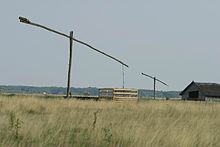
Back Pannoniese Laagvlakte Afrikaans حوض بانونيا Arabic Llanura panónica AST Ortadunay düzənliyi Azerbaijani Урта Дунай уйһыулығы Bashkir Сярэднедунайская нізіна Byelorussian Сярэднедунайская нізіна BE-X-OLD Среднодунавска низина Bulgarian Panonska nizija BS Conca Pannònica Catalan





The Pannonian Basin, or Carpathian Basin,[1][2][3][4] is a large sedimentary basin situated in southeast Central Europe. After the WW1 and Treaty of Trianon, the geomorphological term Pannonian Plain became more widely used for roughly the same region though with a somewhat different sense, with only the lowlands, the plain that remained when the Pliocene Epoch Pannonian Sea dried out.
- ^ Eldridge M. Moores; Rhodes Whitmore Fairbridge (1997). Encyclopedia of European and Asian Regional Geology. Springer. ISBN 978-0-412-74040-4.
- ^ Adami Jordan; Peter Jordan; Milan Orožen Adamič (2007). Exonyms and the International Standardisation of Geographical Names: Approaches Towards the Resolution of an Apparent Contradiction. LIT Verlag Berlin-Hamburg-Münster. p. 240. ISBN 978-3-8258-0035-2.
- ^ George Walter Hoffman; Christopher Shane Davies (1983). A Geography of Europe: Problems and Prospects. Wiley. p. 647. ISBN 978-0-471-89708-8.
- ^ George Walter Hoffman; Nels August Bengtson (1953). A Geography of Europe. Ronald Press Co. p. 757.
© MMXXIII Rich X Search. We shall prevail. All rights reserved. Rich X Search